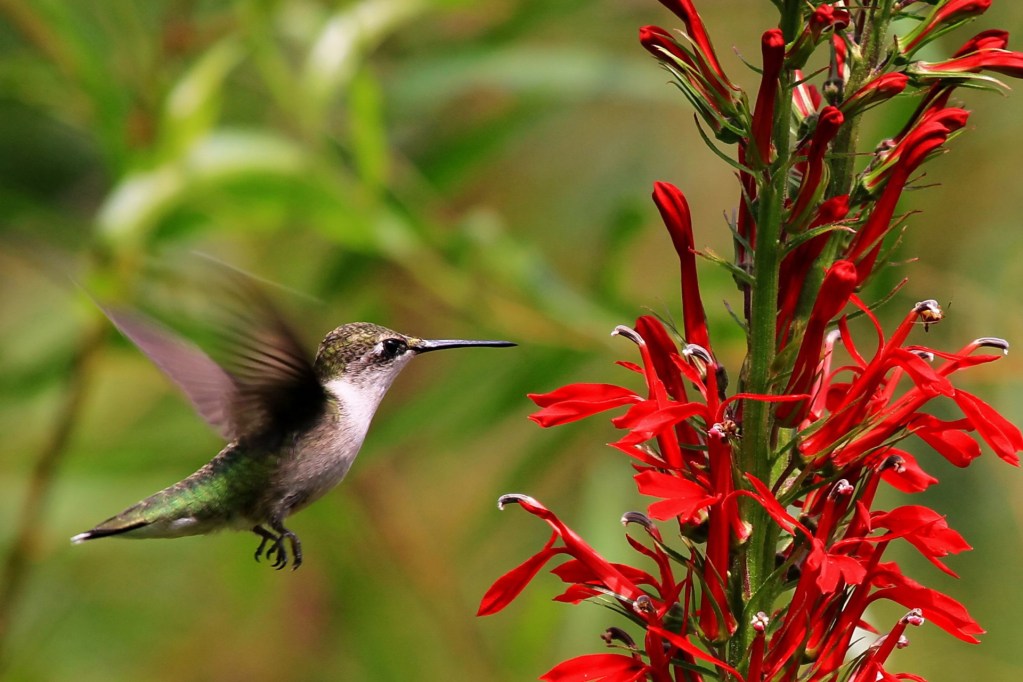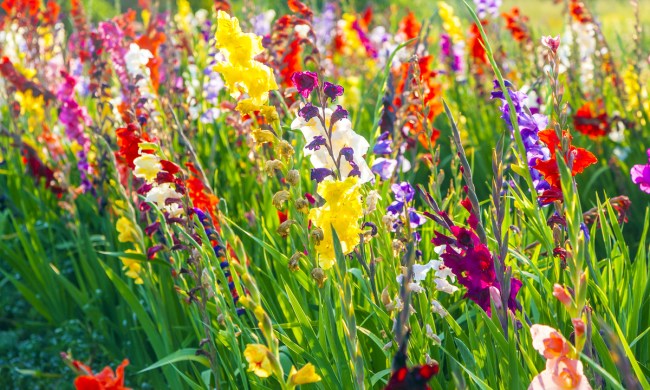Flowers fill a lot of roles in a garden and in a home. They’re great for pollinators, they can lift your mood, and some of them are even edible. If you’re a fan of beautiful blue or purple flowers, you may have heard of lobelia. This flower looks as lovely as its name sounds, and it’s native. Available in shades of blue, purple, and even red, lobelia makes a great addition to gardens. If you want to add this wonderful flower to your home or garden, here’s everything you need to know about planting and caring for lobelia flowers.
Planting lobelia

You can plant lobelia in an outdoor garden as soon as the last frost of winter has passed. If you want an earlier start and a longer bloom time, you can start your lobelia flowers as seeds indoors and transplant them in your garden once the weather warms up.
Lobelia prefers rich, well-draining, and slightly acidic soil, like you might find in their native habitats in forests and meadows. Choose a planting location in full sun to partial shade. Aim for partial shade in hotter regions and full sun in cooler ones if possible. Lobelia is great for areas that get morning sun and afternoon shade.
It’s important to note that while many lobelia species are native to the U.S., not all of them are. Lobelia erinus is popular for growing in containers, hanging baskets, and garden borders, but it’s actually native to parts of Africa.
Some popular lobelia species that are native to the U.S. include:
- Lobelia cardinalis (cardinal flower)
- Lobelia laxiflora (Mexican lobelia or longflower lobelia)
- Lobelia spicata (pale spiked lobelia)
- Lobelia siphilitica (great blue lobelia or blue cardinal flower)
Lobelia plant care

Lobelia plants enjoy consistent watering, but they do not tolerate soggy soil. Wait until the soil is mostly dry before watering your lobelia again, and avoid watering them if it is likely to rain shortly — the rain will do the watering for you. Lobelia flowers aren’t particularly drought tolerant, so if you want to keep your flowers blooming, it’s important to keep them watered.
Lobelia is a heavy feeder — it has to be in order to produce so many flowers. To promote the best flowers, fertilize your lobelia flowers in spring and summer with a balanced fertilizer or compost. Avoid overfertilizing with nitrogen-heavy fertilizers, as this can lead to too many leaves and not as many flowers. You don’t need to deadhead lobelia, but you can if you prefer.
Does lobelia self-seed?

Yes, lobelia plants will self-seed. While it is not an aggressive spreader or seeder, it will spread slowly through these seeds. This is great news if you want a lot of lobelia flowers. If you don’t, then the good news is that lobelia spread is easy to control. Simply uproot the plants you don’t want before they bloom, or remove the flowers before they can produce seeds.
If you do remove the flowers, they can be used to create a lovely display. Tall flower spikes, such as those found in cardinal flowers, pale spiked lobelia, and great blue lobelia, make excellent cut flower arrangements. Individual flowers can be pressed and dried or even encased in resin to keep them fresh.
Is lobelia a perennial or annual?

Lobelia is a tender perennial, meaning it is a perennial in warm regions, but it is often grown as an annual. Lobelia is sensitive to frost damage and cold weather, and if the winter gets too cold, it can die easily. If you want to grow lobelia as an outdoor perennial, you’ll need to live in USDA zones 9 through 11. The further outside this range you live, the higher the likelihood your lobelia flowers will not return next year. This is unfortunate, but because of their self-seeding nature and easy care requirements, replanting lobelia is not as much of a hassle as some plants.
Can you grow lobelia indoors?

Lobelia can grow in containers and indoors. When growing lobelia indoors, make sure to place them in a sunny spot. Lobelia needs plenty of sunlight, and indoor plants tend to get less light than outdoor plants. Supplementing with a grow light can help. Growing lobelia in a container is a great idea if you want to grow non-native lobelia species. Lobelia erinus looks particularly stunning in a hanging basket.
Lobelia is a gorgeous flower that can grow as a perennial or an annual. Whether you grow this lovely flower indoors or out, you’re sure to enjoy all the bright colors this plant has to offer. The soft blues and purples of classic lobelia, the vibrant red of cardinal flowers, or the unique red and yellow combination of Mexican lobelia are all delightful and worth growing.




